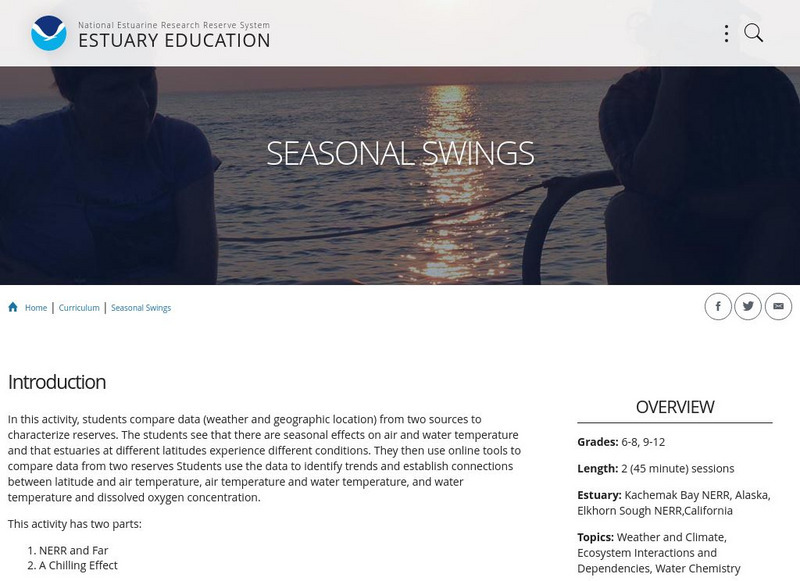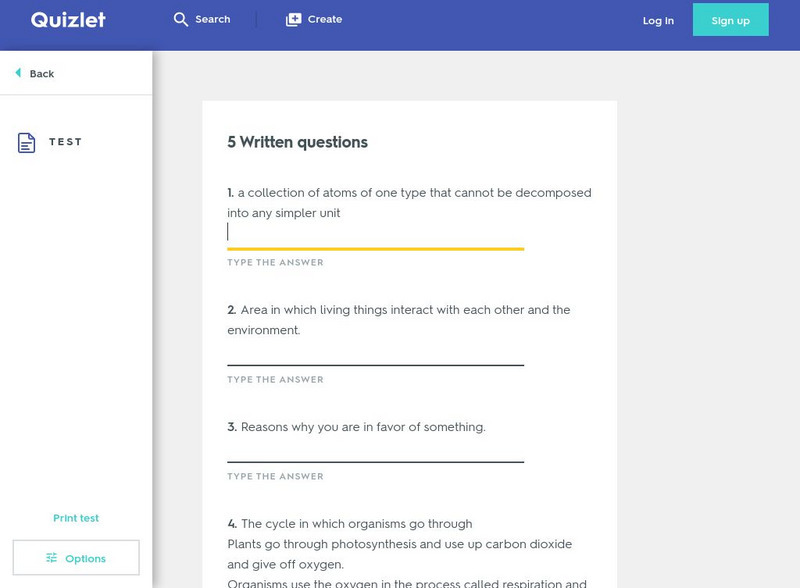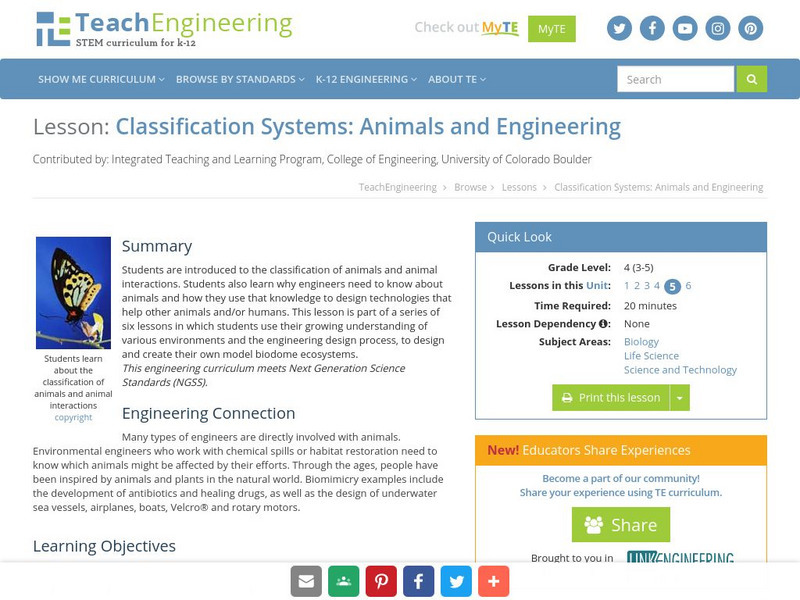CK-12 Foundation
Ck 12: Life Science: Habitat and Niche
[Free Registration/Login may be required to access all resource tools.] Are you on the basketball team? Are you a cheerleader? Do you play an instrument in the band? Your niche would be your role or place in the school. Organisms also...
PBS
Nova: The World on Fire
During 200 the United States experienced one of the worst years for forest fires. The seasonal nature of this disaster is also typical of other countries. This interactive resource provides an overview of worldwide fires during 2000....
CK-12 Foundation
Ck 12: Life Science: 12.1 Ecology Overview
Discover how organisms interact in their environment.
Science Struck
Science Struck: Mutualism Relationships
Learn how mutualism benefits the organisms in a symbiotic relationship and what the different types of mutualism are. Provides lots of examples.
PBS
Pbs Learning Media: A Subsistence Culture Impacted by Climate Change
This short video explains how warmer temperatures in the Arctic are transforming the ecosystem and affecting the Athabaskan people, threatening their way of life. [2:59]
TeachEngineering
Teach Engineering: Biodomes
Students explore the biosphere's environments and ecosystems, learning along the way about the plants, animals, resources and natural cycles of our planet. Over the course of lessons 2-6, students use their growing understanding of...
Georgia Department of Education
Ga Virtual Learning: Life and Environment Relationships
In this amazingly comprehensive interactive tutorial you will learn about the characteristics and features of the different biomes on our planet.
NOAA
Noaa: Estuaries 101 Curriculum: Estuary Food Pyramid
Students learn about the feeding relationships in an estuary ecosystem with this interactive energy pyramid activity. A second activity involves research and a video clip to elaborate the learning.
PBS
Pbs Learning Media: Acid Lake
Students will add acidity to a healthy lake to see what happens to plants and animals in this interactive activity adapted from EcoKids.
PBS
Pbs Learning Media: Biomes
This interactive resource adapted from NASA describes the different temperature, precipitation, and vegetation patterns in seven biomes: coniferous forest, temperate deciduous forest, desert, grassland, rainforest, shrubland, and tundra.
NOAA
Noaa: Estuaries 101 Curriculum: Seasonal Swings
Students use an interactive map to compare environmental conditions in different estuaries around the National Estuarine Research Reserve System. A second activity allows students to use the Graphing Tool to find, select, and graph data...
Discovery Education
Discovery Education: The Dirt on Soil
This interactive website explores the various soil layers and introduces you to the lifeforms that live in those soil layers.
Other
Quinnipiac University: Blogging Across the Curriculum
This online course was created for the Interactive Digital Design Department at Quinnipiac University and is designed to examine how weblogs are being used in academia. The various pages cover the basics of weblogs, how to use Blogger...
Quizlet
Quizlet: 7th Grade Science: Vocabulary: Test
This interactive assessment features 7 matching, 7 multiple-choice, and 6 true/false questions over the 99 vocabulary words.
Quizlet
Quizlet: 7th Grade Science: Vocabulary: Learn
In this interactive practice exercise, students fill in the blank with the vocabulary words when given their definitions. There are 99 science vocabulary words in the list.
CK-12 Foundation
Ck 12: Life Science: Predation
[Free Registration/Login may be required to access all resource tools.] Predation is another mechanism in which species interact with each other. Predation is when a predator organism feeds on another living organism or organisms, known...
National Institute of Educational Technologies and Teacher Training (Spain)
Ministerio De Educacion: La Dinamica De Los Ecosistemas
This unit shows how ecosystems change over time and how matter and energy, which are essential to its operation, are transformed and passed from one living thing to another forming, in some cases, authentic cycles. It contains 19...
American Museum of Natural History
American Museum of Natural History: O Logy: What's the Big Idea? Marine Biology
An introduction to key concepts about the ocean, its ecosystems, and zones. With interactive flash cards that open in new windows to help you learn more.
National Institute of Educational Technologies and Teacher Training (Spain)
Ministerio De Educacion: La Accion Humana en Los Ecosistemas.
Throughout this unit, you will see how man change and affects the environment in which they live. You will have a better understanding of our need of matter and energy and the consequences of their use and abuse. It contains 19...
Other
Lucidchart: The Importance of Sociotechnical Systems
The increase of organizations that rely on both technology and human interaction has given way to more holistic approaches grounded in sociotechnical systems theory. Appreciating how these systems function together helps you visualize...
TeachEngineering
Teach Engineering: Animals and Engineering
Students are introduced to the classification of animals and animal interactions. Students also learn why engineers need to know about animals and how they use that knowledge to design technologies that help other animals and/or humans....
Soft Schools
Soft Schools: Ecology Quiz
Take this interactive, multiple-choice quiz over concepts in ecology, then review your score and any missed questions at the end.
CK-12 Foundation
Ck 12: Life Science: Competition
[Free Registration/Login may be required to access all resource tools.] Ecology is the study of how living organisms interact with each other and with their environment. Organisms interact with each other through various mechanisms, one...
E-learning for Kids
E Learning for Kids: Science: South Africa: How Do Organisms Get Their Energy?
Join Ellen on her trip to the Kaap De Goede Hoop in South Africa, and learn more about plants, animals, and energy.


















